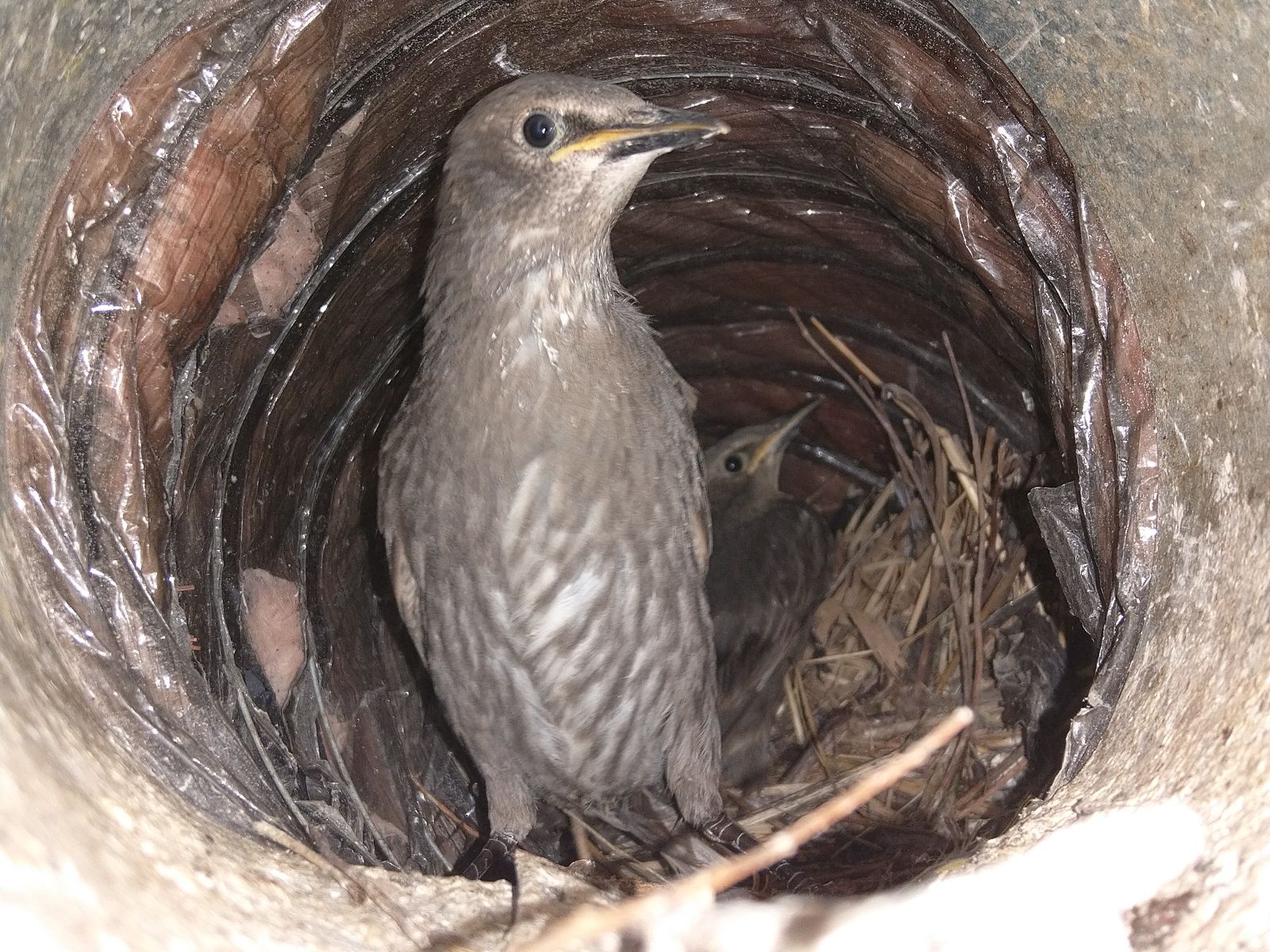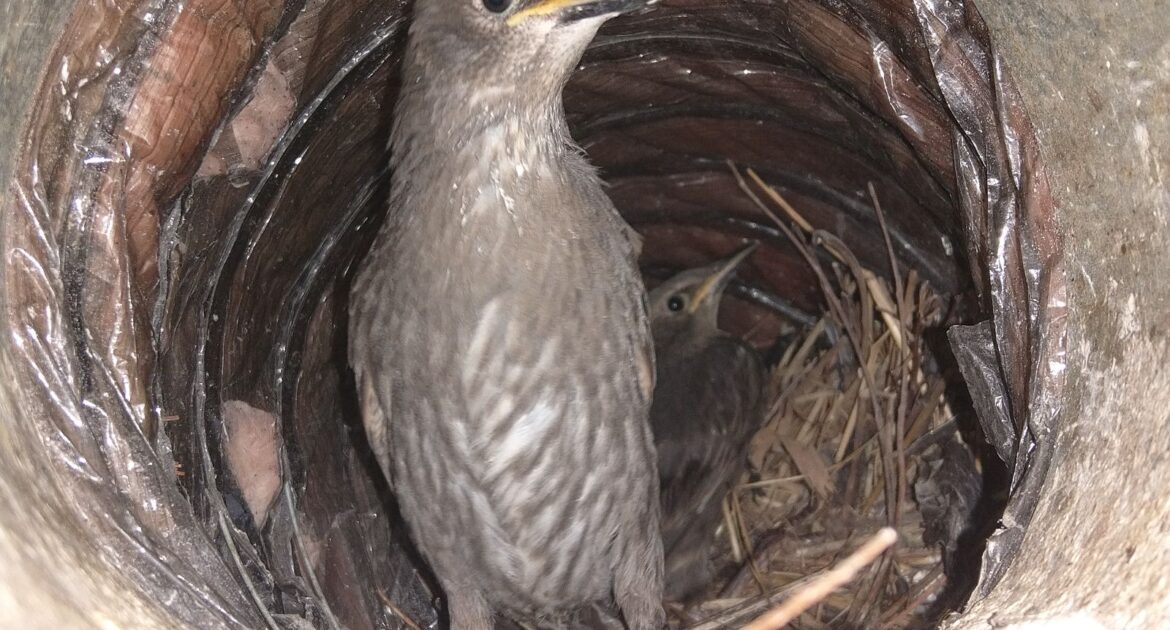When the temperatures drop and the trees are dusted with snow, many people ask, “Should you feed birds in the winter?”
The short answer is yes, but with some important guidelines. Feeding birds in winter not only helps them survive harsh weather but also gives you the enjoyment of watching beautiful creatures right in your backyard.
However, there are risks if it’s not done thoughtfully. This blog will guide you through the benefits, precautions, and best practices, while providing practical winter bird feeding tips to ensure you create a safe and helpful environment for your feathered friends.
We’ll also discuss the role of Skedaddle Humane Wildlife Control in North Atlanta and how we use humane solutions like one-way doors to protect people’s homes while respecting wildlife.
Whether you’re already a bird enthusiast or new to this rewarding hobby, you’ll walk away with insights to make winter bird feeding safe and effective.
Why Feed Birds in Winter?
Winter can be a tough season for birds. Natural food sources like insects, seeds, and berries become scarce. Adding a feeder to your yard can be a lifeline, offering much-needed calories to help them stay warm and healthy.
Feeding birds in winter can also attract a variety of species to your outdoor space, from bright cardinals to cheerful nuthatches, making it an engaging activity for the whole family.
But before you rush out to hang a bird feeder, there are a few things to keep in mind. Feeding birds is not just about tossing up seeds and hoping for the best.
Done incorrectly, it can lead to problems like overcrowding, predation, or birds spreading diseases. Understanding the dos and don’ts will ensure your efforts truly benefit the birds rather than harm them.
The Do’s and Don’ts of Winter Bird Feeding
When it comes to feeding birds in winter, following a few simple rules can make all the difference. Here are some important do’s and don’ts:
Do:
- Use the Right Food: High-energy foods like black oil sunflower seeds, suet, and peanuts are perfect for helping birds maintain their body heat.
- Keep Feeders Clean: Birds can spread diseases at overcrowded and dirty feeders. Clean feeders every two weeks with a mix of water and mild soap or a bleach solution (one part bleach to nine parts water).
- Provide Water: A heated birdbath ensures birds have water, even when everything else is frozen.
- Place Feeders Safely: Hang feeders away from windows to prevent collisions and keep them out of reach from predators like neighborhood cats.
Don’t:
- Feed the Wrong Foods: Bread, salty snacks, or spoiled seeds are harmful. Stick to quality birdseed blends.
- Overfill Feeders: Overflowing feeders can attract unwanted guests like mice or squirrels.
- Ignore Signs of Illness: If you notice sick birds, remove the feeder temporarily to avoid further spread.
By keeping these tips in mind, you’ll create a safer and more enjoyable space for wildlife.
Winter Bird Feeding Tips to Maximize Success
To take your feeding habits to the next level, here are more actionable tips to ensure a rewarding experience for both you and the birds:
Offer the Right Feeders and Food
- Tube Feeders: Great for small seeds like sunflower seeds. These attract birds like finches and chickadees.
- Hopper Feeders: Ideal for a larger mix of seeds and can accommodate bigger birds like cardinals and jays.
- Suet Feeders: These are perfect for winter, as suet provides high-fat nutrition to woodpeckers and nuthatches.
Protect Birds from Predators
To keep birds safe, make feeders a challenge for predators:
- Avoid placing feeders near bushes where cats can hide.
- Install baffles to prevent squirrels or raccoons from climbing feeder poles.
- Consider placing a perimeter fence to limit access for larger intruders.
Minimize Window Collisions
Birds can often mistake reflections for open skies, leading to dangerous collisions. Position feeders either very close to windows (less than 3 feet) or far away (more than 30 feet) to reduce the chances of injury. Adding bird-safe decals or screens to your windows can make them more visible to birds, helping to prevent accidents and keeping your feathered visitors safe.
Keep Calm Around Feeding Stations
Too much noise or activity in the feeder area can scare birds away, making them hesitant to return. Choose a quiet corner of your yard where they can feel safe and undisturbed. Avoid placing feeders near areas with frequent human or pet activity, so birds can feed and rest peacefully.
By combining these expert winter bird feeding tips with the basic do’s and don’ts, you’ll help your local birds thrive through the colder months.
Should You Feed Birds in the Winter? Pros and Cons
While feeding birds in winter can feel rewarding, it’s important to understand both the benefits and concerns. Here’s a quick rundown:
Benefits:
- Aids Survival: Birds burn a lot of energy staying warm and searching for food. Feeders provide an easy way to replenish.
- Educational Opportunities: A backyard feeder creates an up-close way to learn about different bird species.
- Mental Health Boost: Watching birds can bring a sense of peace and connection with nature, especially during long winters.
Challenges:
- Overcrowding Risks: Overused feeders can become culprits for spreading bacteria or diseases.
- Dependency: Some argue that feeding birds may alter natural behaviors, encouraging them not to migrate.
- Attracting Non-Bird Wildlife: Improperly managed feeders can draw rodents or other problem animals to your yard.
A thoughtful plan and mindful practices can balance these concerns, allowing you to help birds enjoy the season safely.
The Humane Solution to Wildlife Challenges
At Skedaddle Humane Wildlife Control in North Atlanta, we often address situations where wildlife unintentionally becomes a problem for homeowners. Sometimes, while feeding birds, homeowners might unknowingly attract other animals like squirrels or raccoons. These animals can find ways into attics or crawl spaces in search of a warm place to stay.
That’s where our expertise comes in. We use advanced one-way doors that allow animals to leave the house but prevent them from returning, ensuring a humane and effective solution. These doors are part of our process of ethical wildlife control, keeping both your home and local wildlife safe.
By understanding both the rewards and risks of feeding birds in winter, and knowing when to call in professional help like Skedaddle, you’ll be prepared to turn your yard into a winter haven for wildlife without creating unintended problems.
Bringing It All Together
Feeding birds in winter can be a joyful and meaningful activity, as long as it’s done with care. By offering the right food, keeping your feeders clean, and following simple precautions, you can help birds survive harsh months while enjoying their presence in your yard.
And remember, if your birdfeeding setup brings unexpected visitors or poses challenges for your home, Skedaddle Humane Wildlife Control in North Atlanta is here to help. With our humane solutions like one-way doors, we ensure that wildlife leaves your space safely, without the risk of returning.
Turn your backyard into a winter wonderland for birds by following these winter bird feeding tips. To learn more about protecting your home while supporting local wildlife, request an estimate from our team today. Together, we can create a safer and healthier environment for both you and your feathered visitors.




